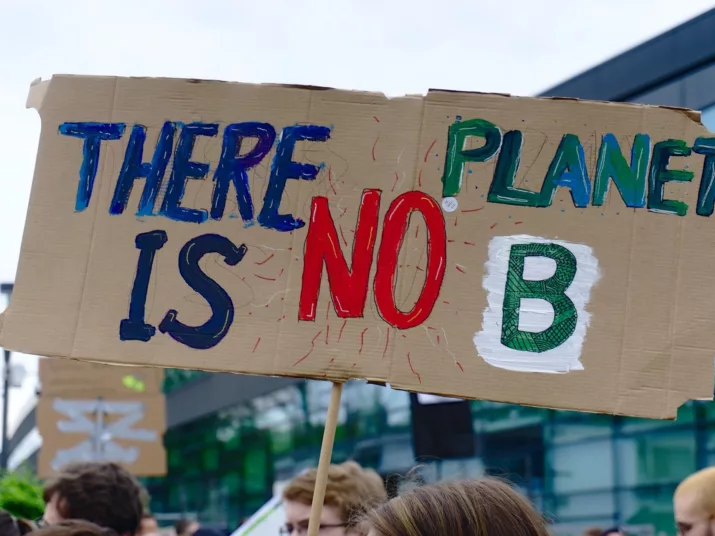
Photo: Pixabay
Thinking Space Nature
The earth in a headlock
In recent years, it’s been one record high temperature after another. There have been periods of drought, hundred-year storms and floods the likes of which the world has never seen before. Merely a coincidence? No way, climate experts say. And they use facts and figures to back up their analysis of the earth’s rising fever curve.

Photo: Pixabay
From “Fridays for Future” to protests at climate summits – activists around the world are calling out what scientists have been publishing for decades: our climate is on the brink. And humans are its greatest enemy. Our planet has never warmed as rapidly as it is doing today. Since the beginning of the Industrial Revolution around 1850 to the present day, the average global temperature has risen by about one degree Celsius. In 2019, the global average was 0.92 degrees Celsius above the 20th century average (15.6 degrees Celsius), according to the National Oceanic and Atmospheric Administration (NOAA). [1]
For the first time, global warming is having serious consequences
Moreover, the effects of rising temperatures have been noticeable as never before in the last decades. Recent studies published by the scientific journal Nature [2] have proven: no warm or cold epoch in the last 2,000 years has affected the entire planet as severely as the rise in temperatures toward the end of the 20th century.
One of the consequences of climate change: the water that’s increasingly being extracted from the land and oceans due to global warming evaporates and collects in the air. Dry regions, for example, will have to reckon with less rain in the future – and water-rich areas with heavier precipitation, because the warmer air can absorb more water vapour. According to the United Nations Intergovernmental Panel on Climate Change (IPCC)[3], global warming increases the risk that climate change will further exacerbate water scarcity and threaten food supplies, especially in countries with poor water supply.
Planet under the heat bell
It’s high time to act – and to curb the number one driver of global warming, namely, emissions of climate-damaging carbon dioxide (CO2). Annually, more than ten gigatons of carbon [4] turn into climate-damaging CO2. The main reason for this is the growing hunger for energy around the globe: most CO2 emissions caused by humans occur because fossil oil, natural gas or coal are burned to generate electricity, heat and fuel.
The problem with burning fossil fuels lies in the release of carbon that prior to its use was stored in the earth without affecting the climate in any way. When burned, it combines with the oxygen in the air to form carbon dioxide (CO2). By generating large amounts of CO2, we amplify the natural greenhouse effect. This causes the earth to warm up: like in a greenhouse, atmospheric greenhouse gases – such as carbon dioxide or methane – prevent the escape of too much heat from the earth into space. However, if there are too many greenhouse gases in the air, too little heat can escape into outer space. As a result, the earth’s temperature regulation gets out of balance. The earth heats up as if it were under a heat bell – and our climate changes.
Paris Agreement: Stop the feverish heating of the climate
In order to halt this process, in 2015, all 195 UN member states signed the Paris Agreement on climate change, the first binding treaty on climate protection under international law. They pledged to keep global warming below two degrees Celsius (read more here: ec.europa.eu). The agreement stipulates that human-made CO2 emissions must approach zero by the second half of this century. The energy transition – including the complete abolition of fossil fuels (Jump mark #43) – is the prerequisite for this change. So far, however, only 17 countries are meeting their Paris climate pledges, according to a study by the London School of Economics and Political Science and the World Resources Institute.[5] That’s too few to keep global warming below two degrees Celsius, scientists are convinced.
But only if this step is successful can climate change be halted and a dramatic rise in sea levels due to melting glaciers and ice sheets be avoided, according to the latest special report [6] on oceans and ice sheets by the Intergovernmental Panel on Climate Change. Moreover, large-scale species extinction would be inevitable if temperatures continue to rise, warns the World Biodiversity Council (IPBES): one million species are at risk of extinction in the coming years and decades, according to the UN’s 2019 report. [7] Unless something is done about land use, environmental protection and climate change mitigation. And fast.